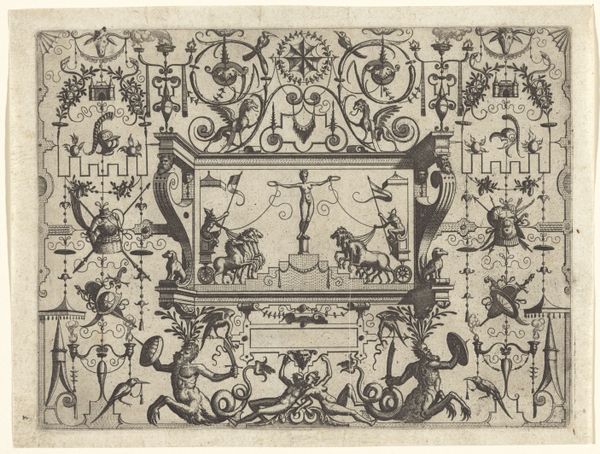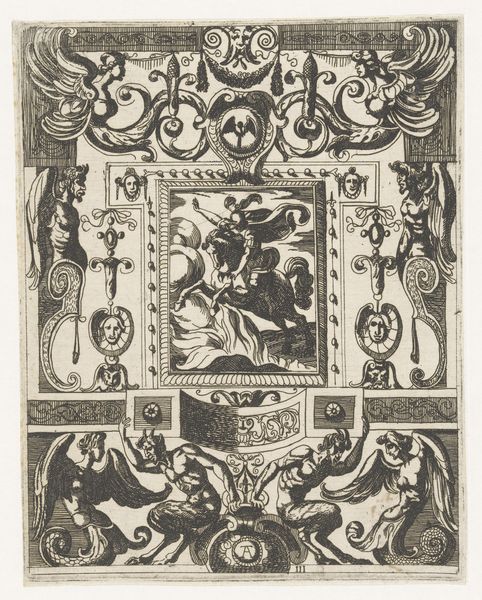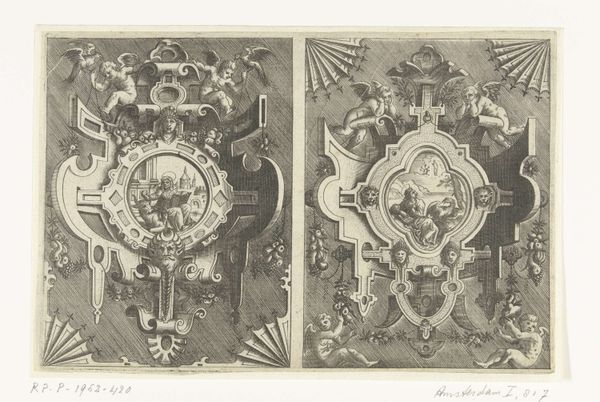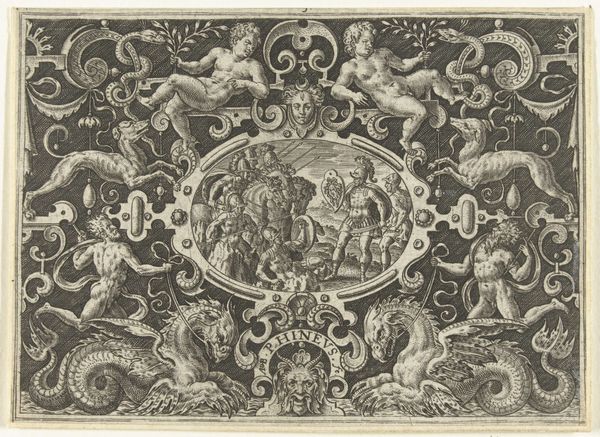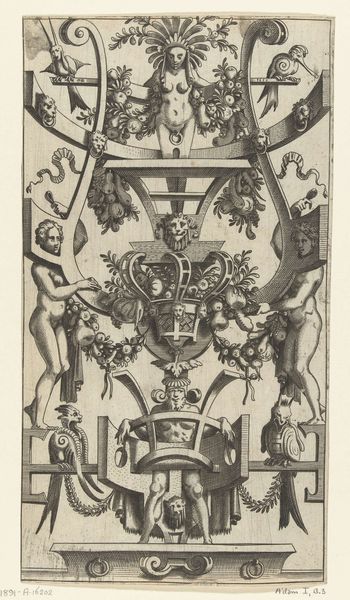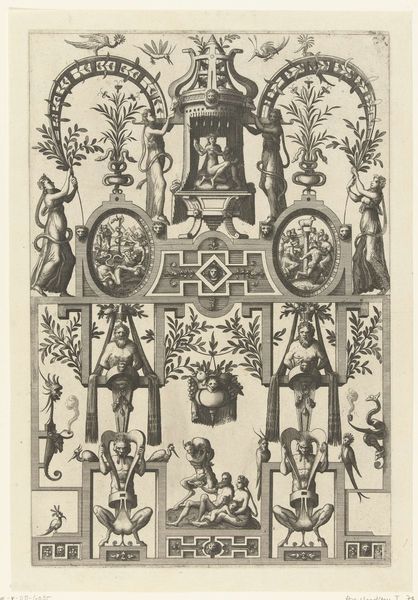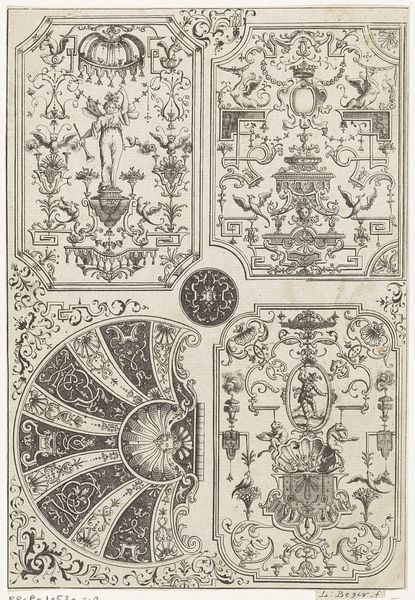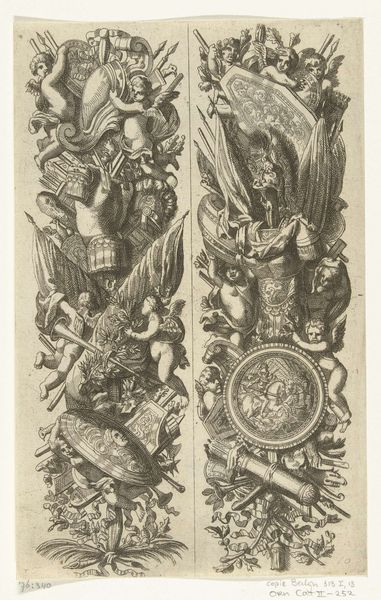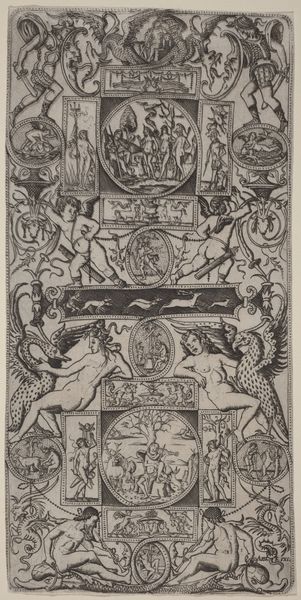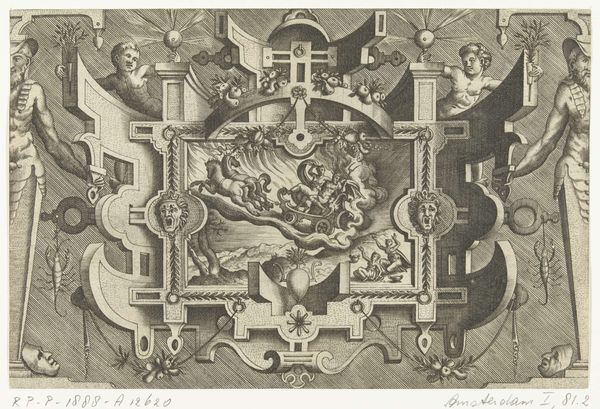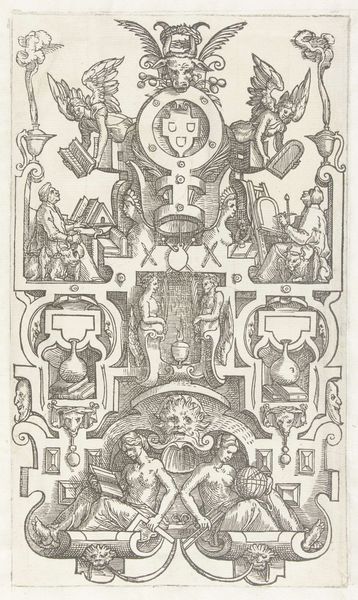
drawing, print, ink, pen, engraving
#
drawing
#
allegory
#
pen drawing
# print
#
mannerism
#
figuration
#
ink line art
#
ink
#
geometric
#
pen work
#
pen
#
history-painting
#
engraving
Dimensions: height 132 mm, width 202 mm
Copyright: Rijks Museum: Open Domain
Curator: Here at the Rijksmuseum we have a fascinating print from 1566 by Pieter van der Heyden entitled "Twee cartouches met mythologische voorstellingen," or, Two Cartouches with Mythological Depictions. It’s done in pen and ink and engraving. Editor: My initial reaction is one of density; it's incredibly detailed and feels almost overwhelming at first glance. There’s a palpable sense of dynamism but it's coupled with, for me, a somewhat unsettling mood evoked by these strange mythical creatures and distorted faces. Curator: Absolutely. It’s an emblem of Mannerism. Each cartouche presents these wildly ornamented borders incorporating mythological figures and scenes. This layering, these contrasting scales, contribute to the overall impact. What meaning do you draw from them? Editor: For me, they point to the inherent contradictions of power. Consider the presence of hybrid creatures and monstrous visages juxtaposed with humanistic ideals; it is reflective of a society grappling with both progress and profound social inequalities. These visuals may critique the dominant power structures cloaked in mythological and allegorical terms. It challenges a simple celebration of myth and asks viewers to interrogate what lies beneath. Curator: I see that! We are also observing a period of tremendous religious and political upheaval. The artist utilizes allegory and these classical motifs in order to offer coded commentary on contemporary affairs. Editor: And what's so interesting is the degree to which the artist manipulates established symbolic vocabularies. For instance, the traditional symbolism of some of these creatures, their familiar attributes—how they can become completely destabilized. This opens up opportunities to decode not just literal representations, but underlying anxieties and societal tensions. Curator: A tension which mirrors our present moment. Visual languages continue to echo throughout time, don't they? It encourages you to ask: What messages have persisted from the 16th century until now? Editor: Exactly. And this piece reminds me of how art becomes a battleground for ideologies, both then and today. Curator: It's pieces like these which prove the lasting power of historical works and remind us that understanding the past allows a rich commentary of today's realities.
Comments
No comments
Be the first to comment and join the conversation on the ultimate creative platform.


